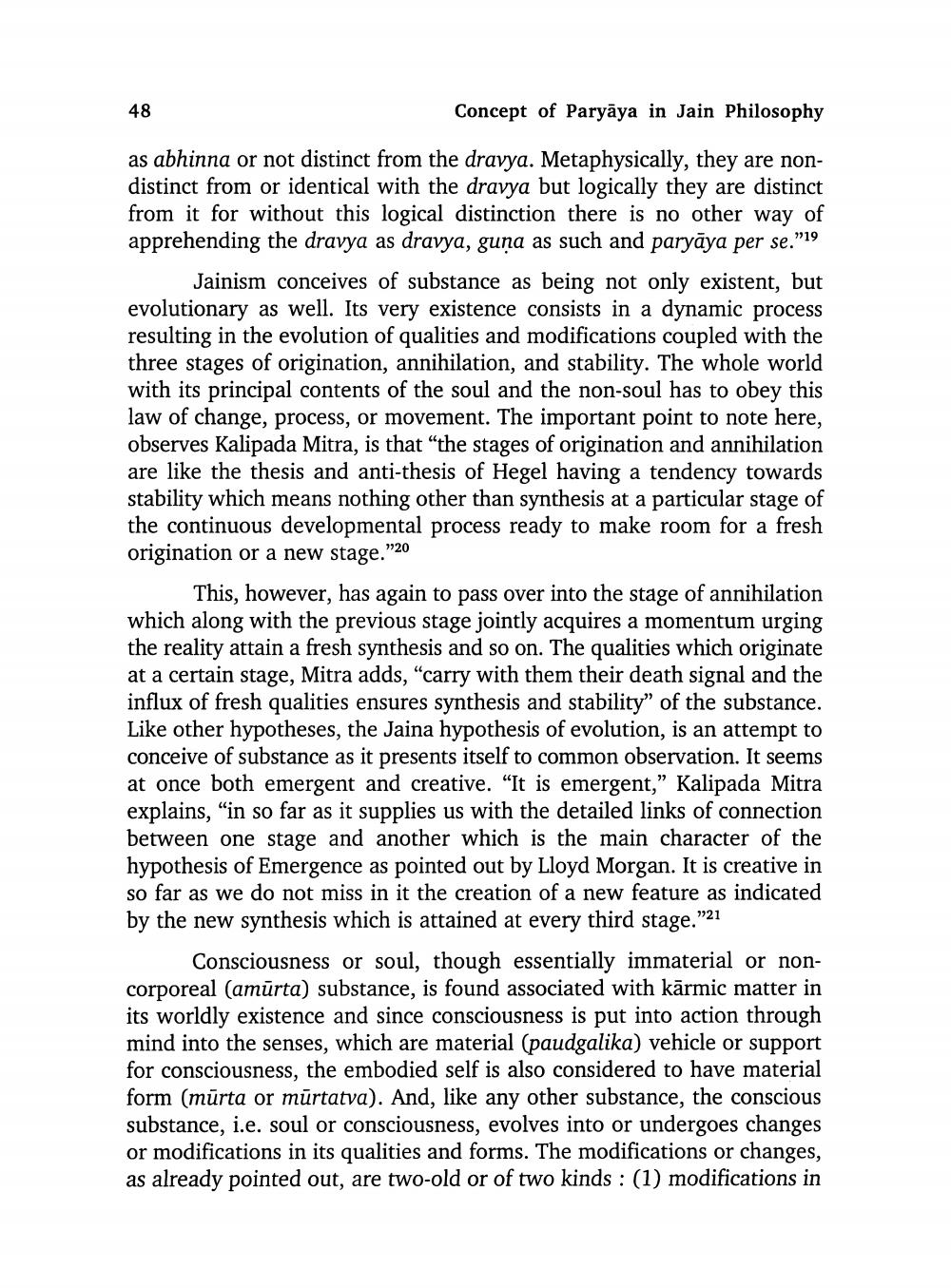________________ 48 Concept of Paryaya in Jain Philosophy as abhinna or not distinct from the dravya. Metaphysically, they are nondistinct from or identical with the dravya but logically they are distinct from it for without this logical distinction there is no other way of apprehending the dravya as dravya, guna as such and paryaya per se."19 Jainism conceives of substance as being not only existent, but evolutionary as well. Its very existence consists in a dynamic process resulting in the evolution of qualities and modifications coupled with the three stages of origination, annihilation, and stability. The whole world with its principal contents of the soul and the non-soul has to obey this law of change, process, or movement. The important point to note here, observes Kalipada Mitra, is that "the stages of origination and annihilation are like the thesis and anti-thesis of Hegel having a tendency towards stability which means nothing other than synthesis at a particular stage of the continuous developmental process ready to make room for a fresh origination or a new stage."20 This, however, has again to pass over into the stage of annihilation which along with the previous stage jointly acquires a momentum urging the reality attain a fresh synthesis and so on. The qualities which originate at a certain stage, Mitra adds, "carry with them their death signal and the influx of fresh qualities ensures synthesis and stability" of the substance. Like other hypotheses, the Jaina hypothesis of evolution, is an attempt to conceive of substance as it presents itself to common observation. It seems at once both emergent and creative. "It is emergent," Kalipada Mitra explains, "in so far as it supplies us with the detailed links of connection between one stage and another which is the main character of the hypothesis of Emergence as pointed out by Lloyd Morgan. It is creative in so far as we do not miss in it the creation of a new feature as indicated by the new synthesis which is attained at every third stage."21 Consciousness or soul, though essentially immaterial or noncorporeal (amurta) substance, is found associated with karmic matter in its worldly existence and since consciousness is put into action through mind into the senses, which are material (paudgalika) vehicle or support for consciousness, the embodied self is also considered to have material form (murta or murtatva). And, like any other substance, the conscious substance, i.e. soul or consciousness, evolves into or undergoes changes or modifications in its qualities and forms. The modifications or changes, as already pointed out, are two-old or of two kinds : (1) modifications in




